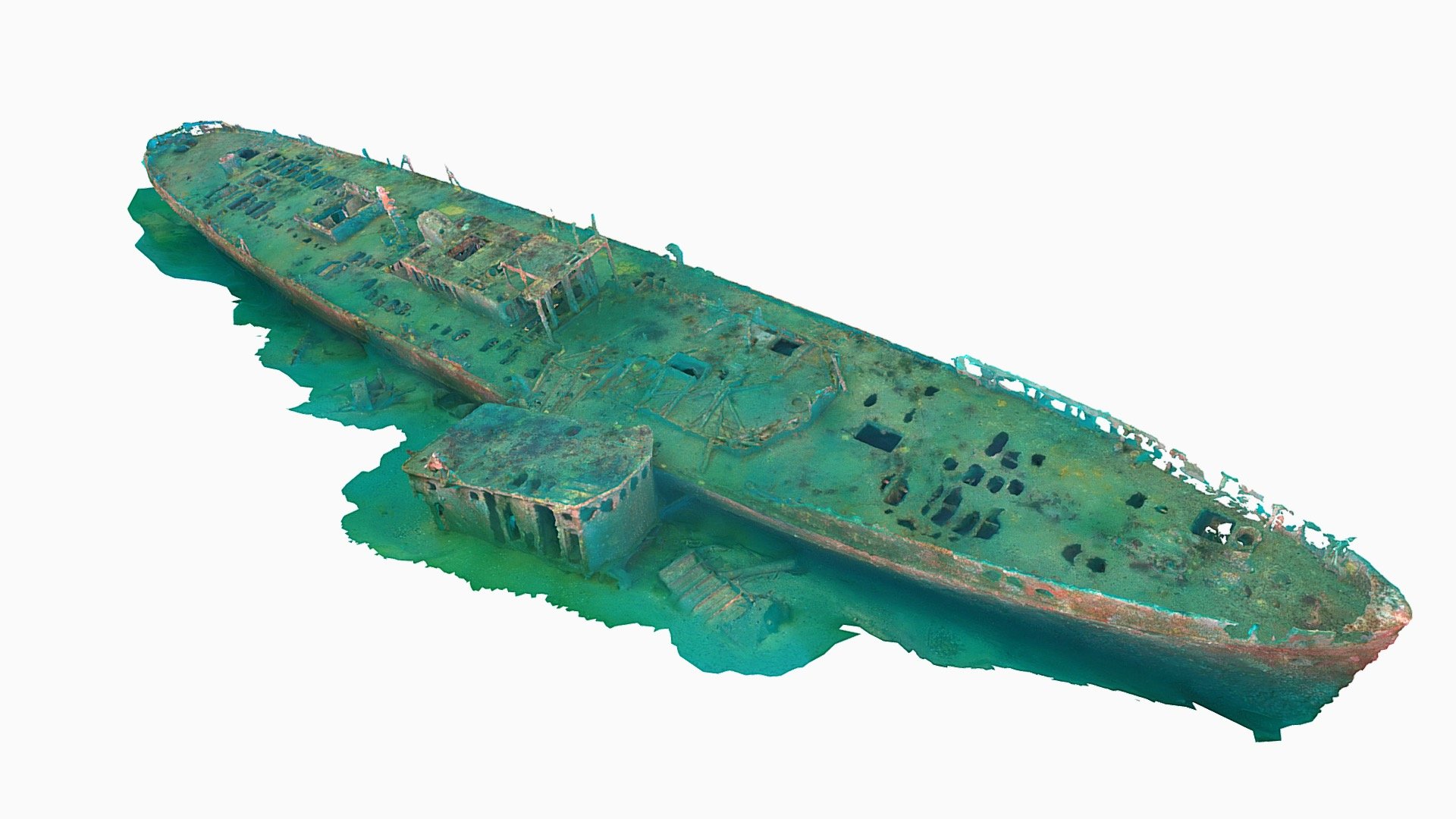The Ruby E is a great wreck in San Diego in relatively shallow water (85 fsw to the sand) with a fun and interesting history. I did a few dives to build a photogrammetry model but then also decided to include the engine room and cargo area in the model. It is my first attempt at including interior spaces into a model. I'm still working on the best way to "show" interior spaces.
The post along with photos and a link to the model are at the link below. If you click on the link for the model, you can actually navigate into the engine room and see the dual six cylinder engines!

 wreckedinmyrevo.com
wreckedinmyrevo.com
Here is a direct link to the model:

 sketchfab.com
sketchfab.com
Below is a screen capture looking into the engine room:

Regards,
- brett
The post along with photos and a link to the model are at the link below. If you click on the link for the model, you can actually navigate into the engine room and see the dual six cylinder engines!

Ruby E (San Diego –85 fsw)
Background The Ruby E was the second vessel intentionally sunk off of Mission Beach, San Diego as part of “wreck alley.” She was built in 1934 and sank on June 18, 1989 so she has been …
Here is a direct link to the model:

Ruby E Wreck (mobile / low res version) - 3D model by Brett Eldridge (@beldridg)
The Ruby E was previously a Coast Guard Cutter that was sold to the private sector and then finally sank in “Wreck Alley” in San Diego. Note that this model includes interior spaces in the engine room and cargo area to the aft of the engine room. You can “peek in” and navigate into those...
Below is a screen capture looking into the engine room:
Regards,
- brett



